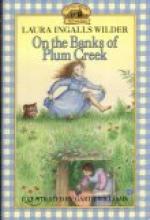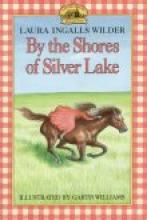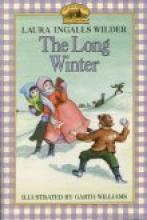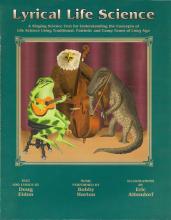No name
On the Banks of Plum Creek
I begin to be amazed at this in this book (the second I have read). I am more and more so as the series continues how hard a life they had - and how they deal with the sour turns that are handed to them. Their trials are far beyond what most of us can imagine going through. It is hard to read - knowing that the story is true. And yet the lesson in hope and character is incredibly valuable. The reader will often have a chance to measure his own sufferings and setbacks against those of the Ingalls family - and see how easy he has things!
By the Shores of Silver Lake
The Long Winter
Little Town on the Prairie
These Happy Golden Years
Another fascinating read from an excellent storyteller.
Caution: This story does contain some elements that may frighten younger or more sensitive children, namely, the situation of the Brewster family with whom Laura boards while teaching at the neighboring town. To give you a brief idea of the situation, Mrs. Brewster seems to be coming unglued, perhaps because of her isolation from all that she is used to. Their child is neglected. And Laura fears for her life after she sees Mrs. Brewster threaten her husband with a knife one night. Yet does not tell her family of her fears because she so wants to earn money for her sister Mary to be able to come home during her vacation.
The First Four Years
Additional Comments: "According to a biography of Laura Ingalls Wilder, the book was begun shortly before Almanzo's death, and afterwards Laura lost interest in it; thus it was published "as is" some years after her death. The different tone is due to the fact that it is a first draft - she did not do the revising and "fleshing out" she did with the others."
(Contributed by Pat Dixon)
Lyrical Life Science
This clever learning set teaches basic concepts in Life Science through cleverly written songs (to tunes like Battle Hymn of the Republic and Dixie). There are eleven songs in all, with a chapter in the text and three pages in the workbook corresponding to each song. These are the song titles:
- "The Scientific Method" (to the tune of "Dixie")
- "All Living Things" (to the tune of "I Love the Mountains")
- "Invertebrates" (to the tune of "Clementine")
- "Coldblooded Vertebrates" (to the tune of "When Johnny Comes Marching Home")
- "Birds" (to the tune of "If You're Happy and You Know It")
- "Algae, Fungi and Nonvascular Plants" (to the tune of "Go Tell Aunt Rhodie")
- "Vascular Plants" (to the tune of "Battle Hymn of the Republic")
- "Protozoa" (to the tune of "Listen to the Mockingbird")
- "Genetics" (to the tune of "Shortnin' Bread")
- "Viruses" (to the tune of "Yankee Doodle")
- "Oh Bacteria" (to the tune of "Oh Susanna")
The song lyrics are very creative and are loaded with worthwhile content. For example, here is the first verse and refrain to the first song, "The Scientific Method" (to the tune of "Dixie"):
Oh, what do you think a scientist does to solve a problem found because many scientists are scientists 'cause they're great problem solvers. There is a systematic way they go about 'most every day. It's methodical and it's logical, The scientific method.
[Chorus:] A way to solve a problem, a way, a way. The scientific method is a way to solve a problem. A way, a way, a way to solve a problem. A way, a way, a way to solve a problem.
Subsequent verses go on to explain the method in detail. My children and I really enjoy singing along with the CD in the car. The songs are performed with a silly tone (imitating the appropriate styles for each song), but by real musicians and with real instruments (no synthesizer – hurray!).
The text, in addition to the lyrics and music (including guitar chords) for each song, contains three to nine pages of information that further explores each topic. Children will memorize the basics (particularly terminology and basic facts) in the songs and then fill in the details by using the text. One could easily introduce the songs to quite young children and use the text a little later on or use the whole set together in upper grade school.
As an example, the segment on "All Living Things" covers (in seven pages) characteristics of living things (reproduce, move, grow, resond to a stimulus, carry on metabolic activities and have a precise structure); needs of living things (energy, water, oxygen, food, living space and proper temperature); the cell as the "building block" of living things; classification of living things and levels of organization. The text is simple and easy to follow and highlighted by pen and ink drawings and charts.
The workbook (reproducible for use in one classroom) includes three pages for each song. A fill-in-the-blanks lyrics page (with a list of words to choose from); an "objective" page (workbook-style review – true or false, matching, questions with short answers, etc.) and a page with a number of short essay-type questions. An answer key is included in the back of the workbook.
I am very impressed with the depth of content, creative presentation and reasonable cost (the workbook may be photocopied for use by your own family, but an additional workbook is only $6!).
A note in the beginning of the text gives some detailed info on how this resource can be used:
This book and CD and tape set can be used by students of many ages. Younger elementary students can benefit by becoming familiar with scientific terms through casual listening, yet may not fully understand the information until later. Middle school students often study life science in six grade; the text and musical arrangements are geared for this age and older students. The information covered in the songs and text should be very familiar to high school students before they study biology in greater depth.
...Ideally, these resources should be in addition to hands-on activities where observations and applications can be made. In this way the knowledge learned through reading and singing can become known through experience as well. You can listen to some sample songs from the CD by clicking here.
Music Performed by Bobby Horton.
91 pg. softcover text, 45 pg. softcover workbook and 30 minute audio CD
This is the first volume of three. The others are "Mammals, Ecology and Biomes," and "Human Anatomy."
A Book of Sanctity
This book is used as a reading text in Seton's 2nd grade program, but is available for sale apart from the curriculum. Interestingly, the typeface at the beginning of the book is somewhat large, becoming gradually smaller as the student progresses through the book. My 3rd-grader read through the book quickly and without challenge, but it would be too difficult for a typical 1st grade student. Randomly selected vocabulary includes Blaise, cloak, gushed, shrine, squirrel, children, sufferings, and loaves. I admit to a fondness for old readers, and this new one deserves a place on the shelf with them!
Grandpa Karm's First Catholic Australian Reader
The story describes farm life in Australia, and the children have a kangaroo and a possum for pets. At the end of the story, the children learn the most simple truths of the Catholic faith. This is a basal reader, and includes vocabulary such as sheep, bear, tea, Friday, thank, rosary, and Mass.
Available from the author at www.ozemail.com.au/~karatt/index.htm









